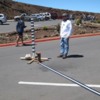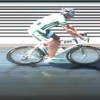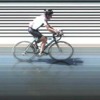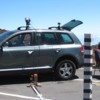The Cycle To The Sun bicycle race starts at sea level and goes straight up the Haleakala Volcano on what's billed as world's steepest paved road, to 10,000 feet altitude, in only 36 miles.
The last 10 miles of the race are in a US National Park, which makes production very difficult. There is absolutely no infrastructure, and the finish is half of an active road.
The constant foot and vehicle traffic past the end of the finish line render Lynx's "Auto-Capture" feature useless. The Lynx ends up capturing for about 6 hours straight, as there is constant activity within its field of view. A visual barrier is difficult, because of the omnipresent high winds up at the top of the crater.
This "barber pole" solved the problem. Since the Lynx's field of view is only one pixel wide, a normal barrier is not necessary. In theory, one could accomplish the same thing (obscuring the background from the Lynx) with a long ruler.
Attachments
Original Post





